[Activity insight] Saving the world with AI?
Woah, woah, that's a bit of a clickbait title, isn't it? But hear me out because the aim of the project task I'm about to introduce to you is to check if this can actually be done.
5 AI queries = 1 photocopy
There were two super interesting posts on Linkedin last week. First, James Abela published a mind-blowing fact about AI use: It takes 5 AI queries to equal the energy of one A4 photocopy.
He then goes on to share other interesting comparisons as well, such as:
1 AI query uses around 10 times more energy than a normal Google search.
Charging a smartphone is around 3-4 AI queries.
Streaming an HD video for an hour uses 50-100 Wh, which is 17-33 AI queries.
What’s surprising in all of this is that we seemed to have been sure, so far, of the fact that whenever we prompt an LLM to do something for us, we’re punching the planet in the face. With Abela’s calculation (he’s created a cool interactive AI energy calculator with some help from Canva AI), the picture doesn’t get any better, to be honest. It simply means that we’re killing the planet either way, whether we’re asking ChatGPT to do something for us or not.
Is photocopying morally acceptable?
Connected to this, Amelia King posted her presentation prepared for Eco Week, which not only highlights the key role that one of our most important resources, water, plays in the existence and use of GenAI, but also attempts to debunk (or rather clarify) some common myths, such as:
ChatGPT is the main reason more data centres are being built.
Using AI is worse for the environment than Google/Youtube/flying/etc.
If you care about the environment and/or climate change, you shouldn’t use AI.
Make it make sense
To me, the bottom line of these two posts is something that I keep saying whenever the question of AI’s impact on the environment comes up during my training sessions or workshops:
We’re harming the environment no matter what. All the luxuries that we can’t really live without (a warm home, big or cozy lights, streaming services, cell phones and laptops, social media, cars and travel, online shopping, lattes, good food, etc.) already use a significant amount of energy. And since AI is getting integrated into almost every single service we use, its impact is becoming ubiquitous and more unclear as such. What we can do is only try and harm the planet less by avoiding overconsumption, overindulgence, and making sure every scroll and click has a purpose.
The project task
So, let’s see this project task from our book (chapter 5.4, p. 89). The idea is that we ask students to do some research in teams to see either how AI technology can save the planet (by optimising farming, for example) or how it destroys the planet and whether there’s a way to stop it.
Nothing is black and white anymore, and AI can either be the destroyer or the savior, or both at the same time. Students are thus asked to look into this gray area, and by becoming more aware of the implications of this technology, hopefully, they will use it more purposefully.


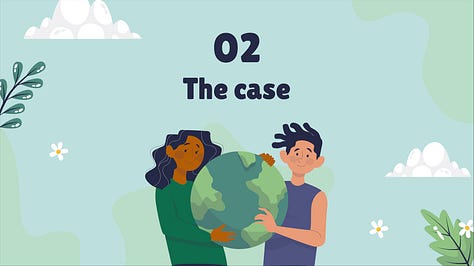
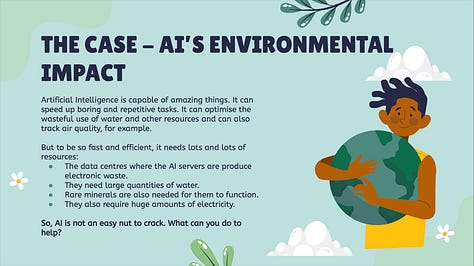

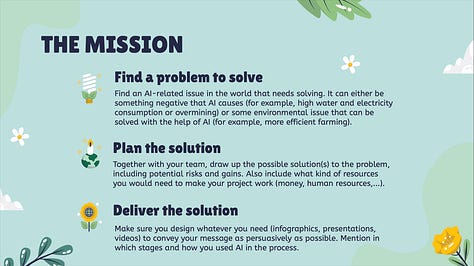
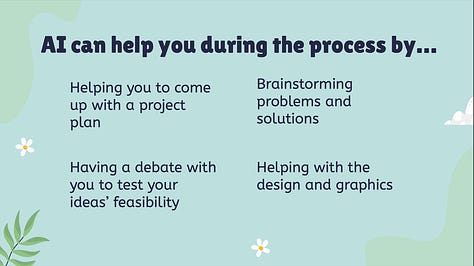

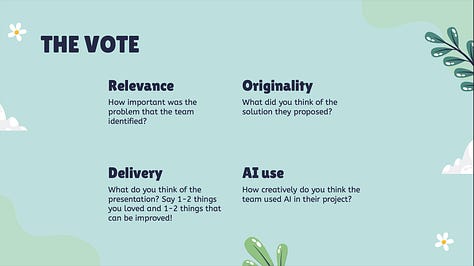
People to follow
If you’re interested in environmental issues and sustainability, and would like to introduce them into your lessons, I wholeheartedly recommend this list of amazing people to follow:
The absolute go-to name is Harry Waters, founder of Renewable English and author of Activities for a Greener Mindset by DELTA Publishing. He is truly an authentic person trying to fight for the planet and the climate both in and outside the EFL classroom.
Jade Blue is a fantastic ELT professional, who authored the Sustainability Framework for ELT Activity Cards and who does workshops and trainings in this area.
Emily Bryson does visuals and sketchnotes, and she has recently shared some amazing visual templates for environmental discussions.
I’m sure this list is not complete, so let me know if I missed someone!
And don’t forget to buy our book! :-)

